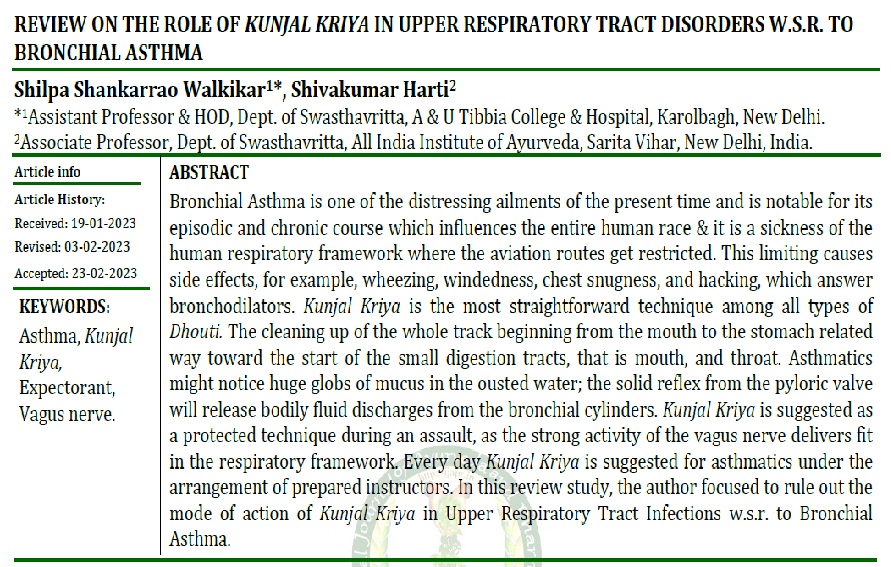The Role of Kunjal Kriya in Upper Respiratory Tract Disorders w.s.r. to Bronchial Asthma
Abstract
Bronchial Asthma is one of the distressing ailments of the present time and is notable for its episodic and chronic course which influences the entire human race & it is a sickness of the human respiratory framework where the aviation routes get restricted. This limiting causes side effects, for example, wheezing, windedness, chest snugness, and hacking, which answer bronchodilators. Kunjal Kriya is the most straightforward technique among all types of Dhouti. The cleaning up of the whole track beginning from the mouth to the stomach related way toward the start of the small digestion tracts, that is mouth, and throat. Asthmatics might notice huge globs of mucus in the ousted water; the solid reflex from the pyloric valve will release bodily fluid discharges from the bronchial cylinders. Kunjal Kriya is suggested as a protected technique during an assault, as the strong activity of the vagus nerve delivers fit in the respiratory framework. Every day Kunjal Kriya is suggested for asthmatics under the arrangement of prepared instructors. In this review study, the author focused to rule out the mode of action of Kunjal Kriya in Upper Respiratory Tract Infections w.s.r. to Bronchial Asthma.
Downloads

Copyright (c) 2023 International Journal of Ayurveda and Pharma Research

This work is licensed under a Creative Commons Attribution-NonCommercial-ShareAlike 4.0 International License.






